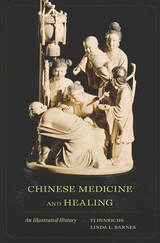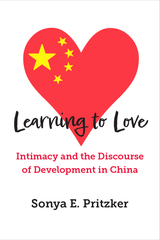
Chinese Medicine and Healing is a comprehensive introduction to a rich array of Chinese healing practices as they have developed through time and across cultures. Contributions from fifty-eight leading international scholars in such fields as Chinese archaeology, history, anthropology, religion, and medicine make this a collaborative work of uncommon intellectual synergy, and a vital new resource for anyone working in East Asian or world history, in medical history and anthropology, and in biomedicine and complementary healing arts.
This illustrated history explores the emergence and development of a wide range of health interventions, including propitiation of disease-inflicting spirits, divination, vitality-cultivating meditative disciplines, herbal remedies, pulse diagnosis, and acupuncture. The authors investigate processes that contribute to historical change, such as competition between different types of practitioner—shamans, Daoist priests, Buddhist monks, scholar physicians, and even government officials. Accompanying vignettes and illustrations bring to life such diverse arenas of health care as childbirth in the Tang period, Yuan state-established medical schools, fertility control in the Qing, and the search for sexual potency in the People’s Republic.
The two final chapters illustrate Chinese healing modalities across the globe and address the challenges they have posed as alternatives to biomedical standards of training and licensure. The discussion includes such far-reaching examples as Chinese treatments for diphtheria in colonial Australia and malaria in Africa, the invention of ear acupuncture by the French and its worldwide dissemination, and the varying applications of acupuncture from Germany to Argentina and Iraq.

Learning to Love offers a range of perspectives on the embodied, relational, affective, and sociopolitical project of “learning to love” at the New Life Center for Holistic Growth, a popular “mind-body-spirit” bookstore and practice space in northeast China, in the early part of the 21st century. This intimate form of self-care exists alongside the fast-moving, growing capitalist society of contemporary China and has emerged as an understandable response to the pressures of Chinese industrialized life in the early 21st century. Opening with an investigation of the complex ways newcomers to the center suffered a sense of being “off,” both in and with the world at multiple scales, Learning to Love then examines how new horizons of possibility are opened as people interact with one another as well as with a range of aesthetic objects at New Life.
Author Sonya Pritzker draws upon the core concepts of scalar intimacy—a participatory, discursive process in which people position themselves in relation to others as well as dominant ideologies, concepts, and ideals—and scalar inquiry—the process through which speakers interrogate these forms, their relationship with them, and their participation in reproducing them. In demonstrating the collaborative interrogation of culture, history, and memory, she examines how these exercises in physical, mental, and spiritual self-care allow participants to grapple with past social harms and forms of injustice, how historical systems of power—including both patriarchal and governance structures—continue in the present, and how they might be transformed in the future. By examining the interactions and relational experiences from New Life, Learning to Love offers a range of novel theoretical interventions into political subjectivity, temporality, and intergenerational trauma/healing.
READERS
Browse our collection.
PUBLISHERS
See BiblioVault's publisher services.
STUDENT SERVICES
Files for college accessibility offices.
UChicago Accessibility Resources
home | accessibility | search | about | contact us
BiblioVault ® 2001 - 2024
The University of Chicago Press









